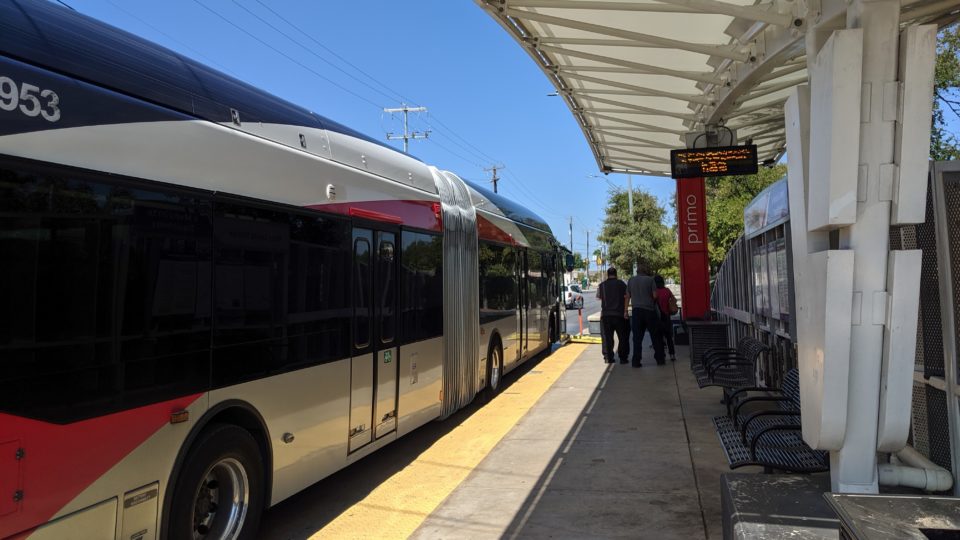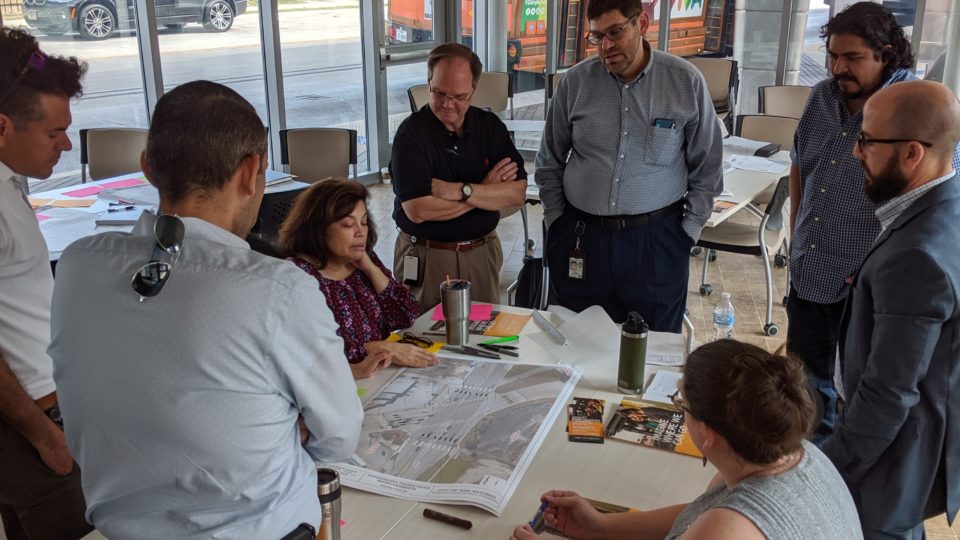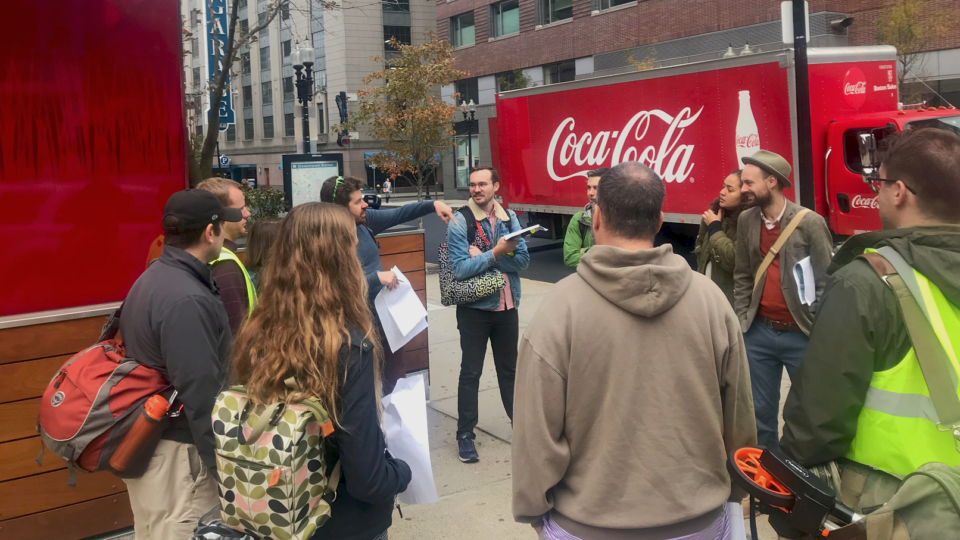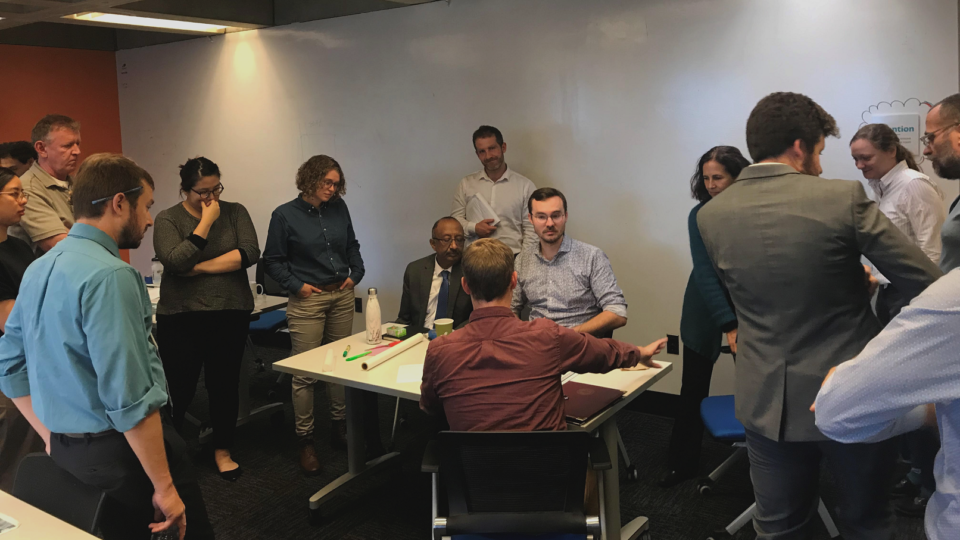Site Visits Continue in Two Climate Challenge Accelerator Cities
NACTO’s Accelerator program, much like the Climate Challenge, is centered around helping cities strengthen the partnerships and pathways they need to rapidly realize important projects—and keep building such projects once the program ends.
Building off our initial Accelerator city site visits, we recently went to San Antonio and Boston for two-day workshops tailored to each city’s local planning context. These visits provided targeted coaching to help city staff achieve their respective climate action goals, now and into the future.
San Antonio
Great cities require great transit, and great transit requires great streets. That’s why San Antonio is redesigning streets to prioritize buses. As one of the fastest growing cities in the U.S., San Antonio’s transportation system is straining and accounts for almost 38% of emissions in the city (with 90% coming from private vehicles). While these figures represent a major challenge, San Antonio prefers to see them as an opportunity. The city’s plan: accommodate new growth and reduce transportation emissions by committing to transit.
 VIA’s Prímo 103 line runs along Zarzamora Street. While already a rapid ride service, this route stands to benefit from a planned redesign along the corridor, which aims to improve pedestrian safety and transit operations.
VIA’s Prímo 103 line runs along Zarzamora Street. While already a rapid ride service, this route stands to benefit from a planned redesign along the corridor, which aims to improve pedestrian safety and transit operations.
Through the Climate Challenge, we’re supporting the City of San Antonio and VIA Metropolitan Transit on their plan to build high-quality transit corridors. First up: Zarzamora Street, a 7-mile north-south route that runs through the heart of San Antonio’s Westside. Prímo 103, VIA’s rapid bus service, already runs along this route, where improved stop spacing, fare collection, and frequencies have created a more reliable transit experience. Additionally, enhanced station-stops with shelter, seating, real-time arrival information, and locally-designed station art has improved the passenger waiting experience and emphasized transit’s importance along the corridor. Even with these investments, San Antonio wants to do more. They know that redesigning the street to prioritize buses can demonstrate to the city’s growing population that transit has the potential to efficiently and sustainably move people—a critical goal in advance of a transit referendum in November 2020.
This October, we joined planners and engineers from VIA and the City for a two-day workshop on this project. On day one we walked S. Zarzamora Street with the team to observe existing conditions, paying attention to specific design elements that currently impact the walking and riding experience along the corridor. On day two, project staff completed a series of design charrettes to tackle these challenges. The interagency team applied best practice in designing streets to reallocate vehicle space for more efficient travel options, and make the street safer and more inviting for multimodal users. These exercises got project staff talking, brainstorming, and drawing around possible design solutions for S. Zarzamora Street.
 Staff from the City of San Antonio and VIA Metropolitan Transit work collaboratively to discuss opportunities and constraints along the project corridor, and identify design elements that can address them.
Staff from the City of San Antonio and VIA Metropolitan Transit work collaboratively to discuss opportunities and constraints along the project corridor, and identify design elements that can address them.
Getting the chance to meet with staff in person was an exciting opportunity for NACTO. We were able to bring our broad perspective and apply it to San Antonio’s ambitious goals, using examples from across North America to show that what they’re working to achieve is within the realm of possibility for their city’s streets. Into early 2020, NACTO will work closely with the City and VIA to hone the design and strengthen interagency collaboration.
Boston
To dramatically reduce transportation emissions, Boston is calling for car trips to be cut in half by 2030 and replaced with more people biking, walking, and taking transit. For biking in particular, Boston wants to increase trips fourfold by building out a comfortable and connected citywide network. Through the Climate Challenge, the city intends to design two high-quality bikeways, which will ultimately fill network gaps in the central city and make it safer and more reliable for people to connect to employment centers and other destinations car-free.
These projects are:
NACTO is providing technical and process support to Boston as they craft design concepts for these corridors, both of which share a similar challenge: safely fitting bikes onto a busy street where multiple modes already jostle for limited space. This October, we facilitated an intensive two-day design workshop with Boston city staff oriented around the opportunities and constraints this challenge presents. On the first day, we walked through typical sections of both project areas to observe existing conditions and discuss design questions in real-time. We reconvened on the second day for a series of exercises, where city staff from multiple departments put their heads together to talk through what they had observed, applying best practice from NACTO’s guidance and extensive peer network to sketch out design alternatives and concepts for both bikeways.
 City of Boston staff joined NACTO for walkthroughs of both project areas, which helped the wider team develop a shared understanding of where possibilities exist to implement high-comfort bike facilities.
City of Boston staff joined NACTO for walkthroughs of both project areas, which helped the wider team develop a shared understanding of where possibilities exist to implement high-comfort bike facilities.
This format facilitated communication and collaboration across teams, creating a space for people to get critical and creative about how Boston can realize their ambitious bike network expansion plans. In the coming months, Boston will refine designs for the Southwest Corridor extension and Mass Ave bikeway through community engagement to make sure these projects address the social and economic impacts that occur because of transportation infrastructure. During this outreach, they’ll apply lessons learned from one-on-one calls with staff from Oakland, CA, and work in close coordination with local neighborhood groups and stakeholders to decide how these projects can reflect the public’s vision and goals.
 Tailored design exercises facilitated engaging and constructive conversations between staff in different departments, creating an opportunity for people to problem-solve designs for the planned Southwest Corridor extension and separated bikeways along Mass Ave.
Tailored design exercises facilitated engaging and constructive conversations between staff in different departments, creating an opportunity for people to problem-solve designs for the planned Southwest Corridor extension and separated bikeways along Mass Ave.
Next Steps
We’ll continue coaching each of the six Accelerator cities as they move their respective projects through the pipeline. Keep checking back for updates from across the Climate Challenge network as we provide support to help cities develop their capacity to deliver on meaningful projects to reduce transportation emissions.